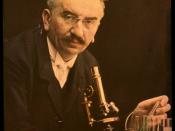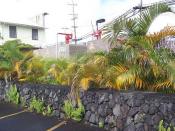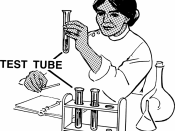Purpose:
To investigate the difference between physical and chemical changes in matter.
Materials:
Safety glasses
13 small test tubes
Test tube rack
Test tube holder
2 100-mL beakers
Funnel
Watch glass
Stirring rod
Evaporating dish
Magnet
Magnifying glass
Crucible tongs
Spatula
Balance
Meeker burner
Ring stand
Iron ring
Wire gauze
Forceps
Sulfur
Iron filings
Sodium Bicarbonate
Sodium Chloride
Sugar
Sand
Magnesium ribbon
Hydrochloric Acid
Distilled water
Filter paper
9 disposable dishes
Procedure:
1. Label 7 of the dishes with the names of the following products: Sulfur, Iron, Sodium Bicarbonate, Sodium Chloride, Sugar, Sand, and Magnesium. Place small samples of each in the appropriate dishes.
2. Examine each sample with a magnifying glass and magnet and record your observations in the data table.
3. Put small samples of each substance in a test tube along with 3 mL of water to determine their solubility.
4. Mix some of the Iron and Sulfur on a clean disposable dish and examine the mixture with a magnifying glass and magnet.
Record your observations in the data table. Save and label this mixture.
5. Mix some of the sand and Sodium Chloride on a clean disposable dish and examine the mixture with a magnifying glass and magnet. Then, place this mixture in a clean 100-mL beaker. Add 30 mL of tap water and stir. Prepare a filtration setup, filter, and record your observations.
6. Pour 10 mL of the filtrate into an evaporating dish, prepare a heating setup, and gently heat until all of the liquid is gone. Examine the residue in the evaporating dish and on the filter paper.
7. Using the crucible tongs, hold a dry piece of Magnesium ribbon in the flame. Quickly place the burning ribbon on the watch glass. Compare the appearance of the ribbon before and after burning.
8. Place the burnt remnants of the Magnesium into a clean test tube, and add 10 drops of Hydrochloric acid to it. Also, add 10 drops to the original Magnesium. Feel the bottom of each tube.
9. Put some sugar in a clean test tube and heat it. Watch for changes and periodically check for odors. Record your results.
10. Scrape some of the sugar residue into a clean test tube and add 3 mL of water to test its solubility. Record your results. Then add 5 drops of Hydrochloric acid to it and feel the bottom of the tube.
11. Add 5 drops of Hydrochloric acid to the test tube with the Sodium Bicarbonate dissolved in water. Feel the bottom of the tube and note the collection on the sides.
12. Place the sample of the Iron and Sulfur mixture into a clean test tube. Heat it vigorously for several minutes. Submerge the hot test tube into water. Test it for magnetism.
Data and Observations:
Data Table 1: Physical Properties of Matter
Substance Physical State Color Odor Solubility Magnetism
Sulfur solid yellow none partially no
Iron solid brown rusty metal yes yes
Sodium Bicarbonate solid white none yes no
Sodium Chloride solid white none yes no
Sugar solid white sweet yes no
Sand solid tan none partially no
Magnetism solid silver metallic no no
Data Table 2: Observation of Physical and Chemical Changes
System Observations
Iron and Sulfur mixture with magnet Only the iron is magnetic; Sulfur is less clumpy
Sodium Chloride and sand mixture
With water -
Filtered -
Evaporated -
No reaction
Sand stays in the filter
Water evaporates; Salt stays in dish
Magnesium burned in air Burns bright white
Magnesium reacted with acid Temperature rises a little; Fizzes
Combusted product reacted with acid Temperature rises a lot; Fizzes
Sugar heated Smelled like burnt marshmallows; Smoked; Turned black
Sodium Bicarbonate Temperature rises a little; Droplets form on inside of tube
Calculations:
There were no calculations made in this lab.
Conclusion:
Physical changes do not change the properties of the individual substances. Chemical changes will affect the properties.


